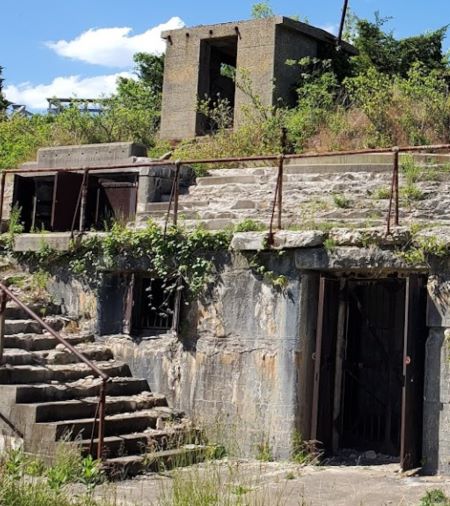What is cement, how is it made?
Cement is a crucial building material that plays a foundational role in constructing structures around the world. Let’s delve into how it’s made:
- Ingredients: Cement is manufactured through a precise chemical combination of several raw materials:
- Limestone, shells, or chalk (rich in calcium)
- Shale, clay, or marl (containing silica, aluminum, and iron)
- Other components like blast furnace slag, silica sand, and iron ore.
- Manufacturing Process:
- Quarrying: The principal raw materials (mainly limestone, clay, and others) are extracted from quarries.
- Crushing: The rock is crushed to reduce its size.
- Mixing: Crushed rock is combined with other ingredients (such as iron ore or fly ash).
- Cement Kiln: The mixture is fed into a cement kiln, where it’s heated to about 2,700°F (1,480°C).
- Clinker Formation: As the material moves through the kiln, certain elements are driven off, and the remaining elements unite to form a new substance called clinker.
- Cooling: Clinker comes out of the kiln as grey balls and is cooled down.
- Grinding: The cooled clinker is ground into a fine powder, which we commonly recognize as cement.
- Historical Tidbit: The first portland cement was created by Joseph Aspdin of Leeds, England, in the 19th century. He achieved this by burning powdered limestone and clay in his kitchen stove, laying the foundation for an industry that processes vast amounts of raw materials into fine cement powder.
Remember, cement is the binding agent that, when mixed with sand and rock, forms concrete—the backbone of our modern infrastructure!
Differences between cement and concrete
- Cement:
- Definition: Cement is a binder manufactured from a mixture of iron, aluminum, silicon, calcium, and other substances found in limestone, shells, chalk, clay, iron ore, and silica sand.
- Process: These ingredients are heated to a very high temperature, creating a rock-like substance that is then ground into an extremely fine powder.

- Usage:
- Cement is infrequently used on its own.
- It is primarily an ingredient in concrete.
- It can be mixed with water and used as a grout.
- It is combined with plaster and water to create a smooth surface on masonry.
- Invention: Modern cement was invented in the kitchen of an English bricklayer in the early 19th century.
- Concrete:
- Definition: Concrete is a mixture of cement, aggregate (such as sand, stone, and gravel), and water.
- Strength and Durability: Concrete is stronger and more durable than cement.
- Applications:
- Concrete is widely used in residential and commercial construction.
- It forms the foundation for structures like roads, bridges, dams, sidewalks, and patios.
- Chemical Reaction: Concrete owes its strength and versatility to the chemical reaction that occurs when cement, aggregate, and water mix.
- Note: You cannot use cement alone as a construction material.
Remember, while cement is an essential component, concrete is the finished product that we encounter in our daily lives!
Mixing concrete with water
Using too much water when mixing concrete can have both positive and negative effects.
- Positive Effects:
- Workability: Additional water makes the concrete more workable. It becomes easier to mix, pour, and shape.
- Placement: In certain situations (such as pouring into tight spaces or around reinforcement), slightly more water can aid in better placement.
- Reduced Shrinkage: Adequate water can reduce shrinkage as the concrete cures.
- Negative Effects:
- Strength Reduction: Excessive water weakens the concrete. The chemical reaction between cement and water is crucial for strength. Too much water dilutes this reaction, resulting in weaker concrete.
- Durability: Overly wet concrete is less durable and prone to cracking, especially during drying.
- Increased Porosity: Excess water creates more pores in the concrete, making it less resistant to freeze-thaw cycles and chemical attacks.
- Setting Time: Too much water delays the setting time, affecting construction schedules.
- Guidelines:
- Proper Ratio: Follow the recommended water-to-cement ratio for the specific concrete mix. This ensures optimal strength and durability.
- Adjust Gradually: If the mix seems too dry, add water incrementally until you achieve the desired consistency.
- Test Consistency: Aim for a mix that is workable but not overly wet. It should hold its shape without excessive sagging.
Remember, balance is key. Too little water can lead to a stiff mix, while too much compromises strength and durability.
Concrete strength
Concrete strength is a crucial factor in determining the durability and performance of concrete structures.
- Compressive Strength:

- Definition: Compressive strength measures a concrete mixture’s ability to withstand loads that cause it to shrink or decrease in size.
- Testing: It is assessed by breaking cylindrical concrete specimens using specialized machines. The results are reported in pounds per square inch (psi).
- Significance: Compressive strength is a critical criterion for determining whether a concrete mix meets the requirements of a specific project.
- Typical Ranges:
- Footings and slabs on grade: 3,500 to 4,000 psi
- Suspended slabs, beams, and girders (e.g., bridges): 3,500 to 5,000 psi
- Traditional concrete walls and columns: 3,000 to 5,000 psi
- Pavement: 4,000 to 5,000 psi
- Concrete structures in colder climates require higher psi to withstand freeze/thaw cycles.
- Tensile Strength:
- Definition: Tensile strength refers to concrete’s ability to resist breaking or cracking under tension.
- Impact: It affects the occurrence and size of cracks in concrete structures.
- Average Range: Traditional concrete typically has tensile strength varying between 300 and 700 psi (approximately 2 to 5 MPa), with tension averaging about 10% of the compressive strength.
- Flexural Strength:
- Definition: Flexural strength (also known as bending strength) measures a concrete beam’s ability to withstand bending forces.
- Applications: It is crucial for structures like beams, slabs, and bridges.
- Testing: Flexural strength is determined by applying a load to a concrete beam until it fails.
- Importance: High flexural strength ensures resistance to cracking and deformation.
Remember, concrete strength properties impact the quality, longevity, and cost of concrete projects. Additionally, innovative technologies like Ultra-High Performance Concrete (UHPC) offer even greater strength properties compared to traditional concrete.
Pouring concrete in winter
Regarding pouring concrete in winter, it is indeed possible, but special care must be taken to ensure proper curing and protection from freezing temperatures. Here are some tips:
- Preparation Practices:
- Preheat Materials: During cold weather, preheating the constituent materials (water and aggregate) ensures the proper concrete temperature during the pour. Heating the water and/or sand and gravel before mixing achieves this.
- Avoid Extremely Low Temperatures: When outdoor temperatures drop below 20 degrees Fahrenheit, it’s best to avoid placing concrete outdoors. Hydration stops completely at such low temperatures, making it challenging to maintain work-site temperatures for good results.
- Cold Weather Concrete Mix: Use a concrete mix designed for cold weather, which includes warm to hot mixing water.
- Curing Blankets: Cover the freshly poured concrete with curing blankets to prevent freezing.
- Freezing Concerns:
- Concrete that freezes too soon (before it reaches sufficient strength) can suffer a permanent loss of strength. Early freezing may reduce the final concrete strength by up to 50%.
- If the air temperature during pouring and placing is below 40 degrees Fahrenheit, and below-freezing temperatures are expected within the first 24 hours, follow recommended practices for cold-weather concreting.
Remember, with proper precautions, you can successfully pour concrete in cold weather and achieve excellent results. When done correctly, concrete poured in cool weather can be stronger than concrete poured in hot weather due to the slower curing time.
